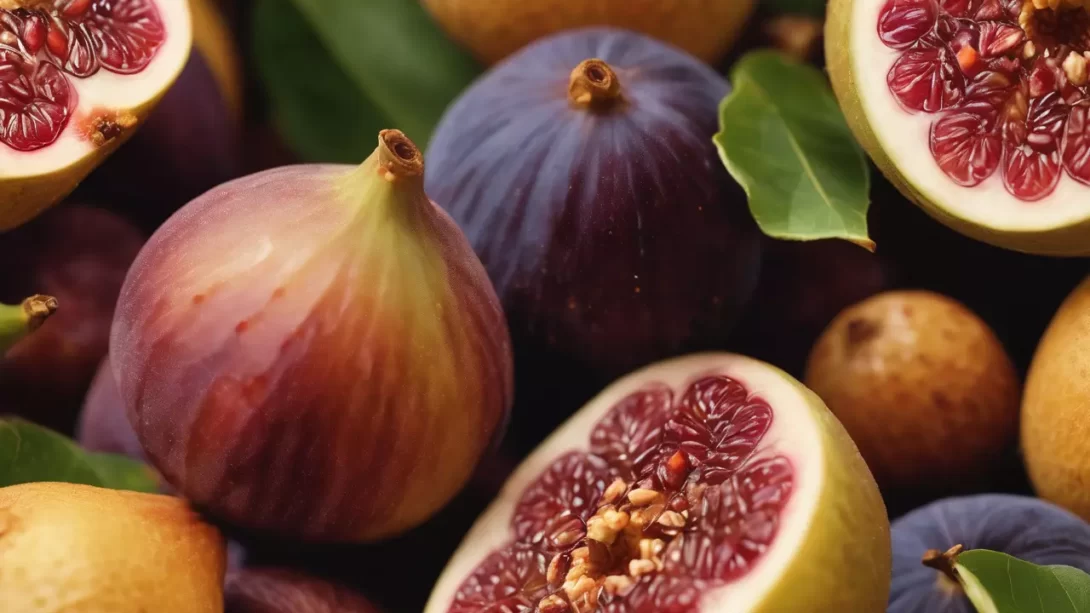Figs and dates, while both sweet fruits enjoyed around the world, have distinct differences that set them apart. Understanding these differences is important, not just for culinary purposes, but also for their nutritional benefits. Let’s delve into the unique characteristics of each fruit.
Botanical Differences
At the botanical level, figs and dates come from different plant families and have distinct growth habits.
- Figs: Figs are part of the Moraceae family, commonly known as the mulberry family. The fruit comes from the Ficus genus, specifically Ficus carica. Fig trees are deciduous and can grow to significant heights, with large, broad leaves.
- Dates: Dates, on the other hand, are from the Arecaceae family, which includes palm trees. The fruit is produced by the date palm, Phoenix dactylifera. Date palms are tall, with a singular trunk and frond-like leaves at the top.
These botanical distinctions are reflected in the fruits’ different growing environments and cultivation methods.
Appearance and Texture
Figs and dates also vary markedly in their appearance and texture.
- Figs: Fresh figs are teardrop-shaped and come in various colors, including purple, green, and brown. They have a soft and slightly chewy texture, with a unique, almost jelly-like interior filled with tiny seeds.
- Dates: Dates are typically smaller and elongated. They have a wrinkled skin when dried and a smooth, shiny appearance when fresh. Dates are known for their sticky and chewy texture, with a single large seed inside.
This contrast in appearance and texture influences how they are consumed and what culinary roles they play.
Flavor Profiles
The flavor profiles of figs and dates are both sweet but have distinct nuances.
- Figs: Figs have a subtly sweet taste, often described as a mix of berry-like and honey flavors. They also have a slight earthiness, which adds to their complexity.
- Dates: Dates are much sweeter than figs, with an intense caramel-like flavor. This richness makes them a common sweetener in various dishes and desserts.
Nutritional Content
The nutritional profiles of figs and dates differ, offering various health benefits.
- Figs: Figs are lower in calories compared to dates and contain significant amounts of dietary fiber, which aids in digestion. They are also rich in vitamins such as vitamin A, B vitamins, and vitamin K, and minerals like potassium, magnesium, and calcium.
- Dates: Dates are calorie-dense and high in natural sugars, making them a great energy source. They are packed with essential nutrients including potassium, magnesium, and copper, and are an excellent source of dietary fiber. Dates also contain antioxidants such as flavonoids and carotenoids.
Both fruits offer unique nutritional benefits, making them valuable additions to a balanced diet.
Culinary Uses
Figs and dates are versatile in the kitchen, each bringing their distinct flavors and textures to various dishes.
- Figs in Cuisine: Figs are celebrated for their subtle sweetness and texture. They are commonly used in salads, cheese platters, and desserts. Fresh figs are excellent in jams, while dried figs can be a great addition to baked goods and cereals.
- Dates in Cooking: Dates are often used as natural sweeteners in baking and smoothies. They are a key ingredient in Middle Eastern cuisine, featuring in dishes like tagines and stuffed pastries. Dates are also popular in energy bars and balls due to their high natural sugar content.
These culinary uses underscore the versatility of figs and dates, allowing them to be incorporated into a wide array of dishes.
Growing Regions and Cultivation
The cultivation and production of figs and dates are influenced by their respective growing conditions.
- Growing Figs: Figs thrive in temperate climates and are widely grown in regions like the Mediterranean, the Middle East, and California. They prefer dry, sunny locations and well-drained soil.
- Cultivating Dates: Dates require hot, arid climates for optimal growth, commonly cultivated in the Middle East, North Africa, and parts of the United States like California and Arizona. Date palms need plenty of sunshine and have a high tolerance for drought.
Conclusion
In summary, while figs and dates may appear similar at a glance, especially in their dried forms, they are distinctly different in terms of their botanical characteristics, appearance, texture, flavor, nutritional content, culinary uses, and cultivation methods.



